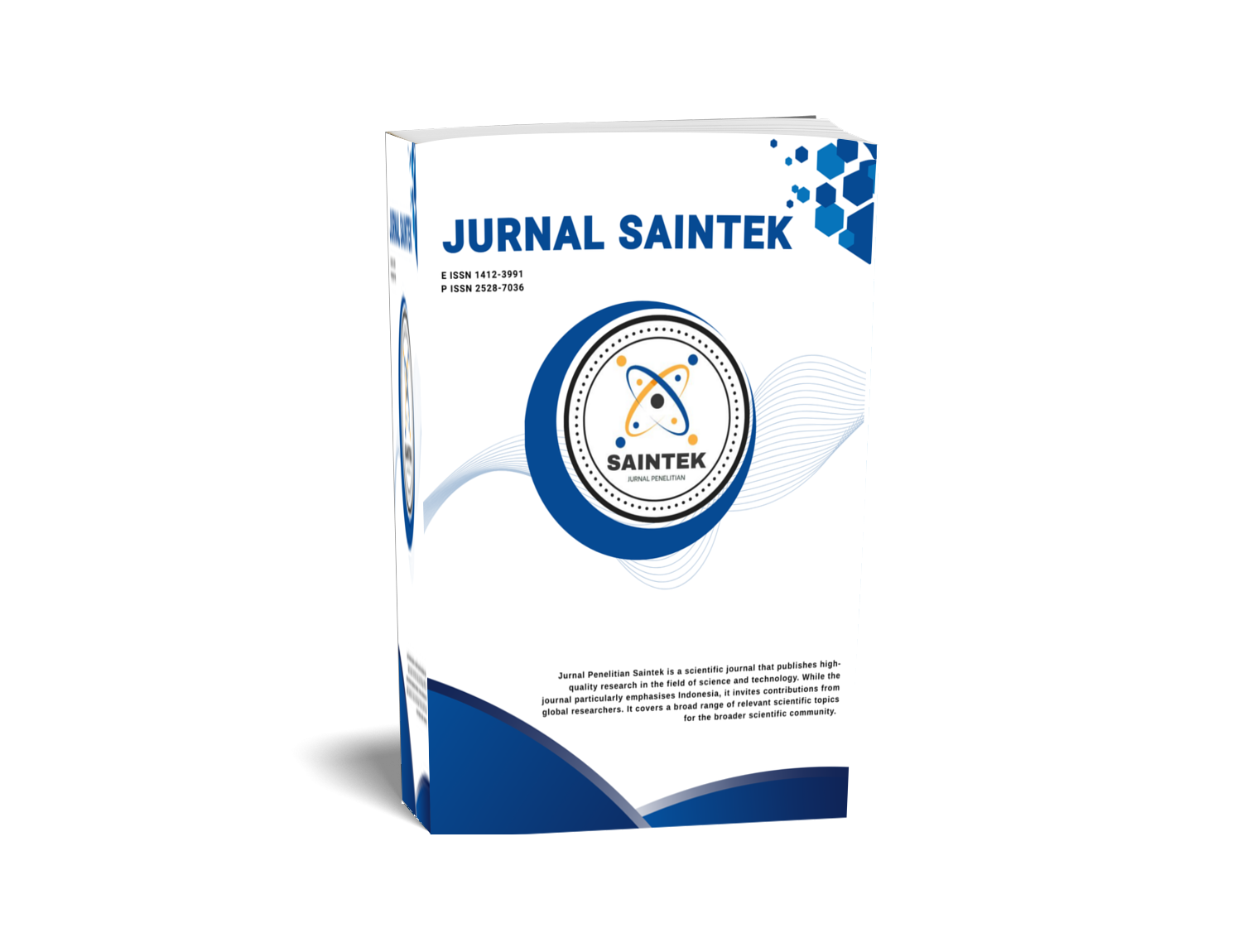BIOLOGICAL TEST AND CHARACTERIZATION OF PHOSPHATE RHIZOBACTERIAL ISOLATE USING CORN PLANT INDICATOR
DOI:
https://doi.org/10.21831/jps.v23i1.19098Keywords:
phosphate rhizobacteria, phosphatase, and bioassayAbstract
Phosphate rhizobacteria (PR) plays an important role in increasing solubility and availability of phosphate for plants. The experiment to investigate the capabilities of PR isolates was conducted from March to August 2017 in laboratories and greenhouse. Bioassay test using the Murphy media and maize as indicator was arranged as a randomized block design consist of six treatments (one control and five isolates PR) and provided with five replications. The plant height, root length, and dry weigth of plant were measured at 14 days. The dissolved P and enzyme phosphatase production were measured using Bray I and Eivzy Tabatai methods. The result shows that the PR isolates had relatively different ability to dissolve of P, produce of phosphatase and to increase the plant growth. J1M and J5H isolates has produced of phosphatase enzyme 63.25 μg pNP/g/h and 62.84 μg pNP/g/h, soluble phosphate 66.24 ppm and 75.42 ppm. J1M and J5H isolates were able to produce dry weights of plants 728 mg and 660 mg (about 60.3% and 45.3% higher than control).
UJI HAYATI DAN KARAKTERISASI ISOLAT RHIZOBAKTERI FOSFAT
DENGAN INDIKATOR TANAMAN JAGUNG
Rhizobakteri fosfat (RF) berperan penting dalam meningkatkan kelarutan dan ketersediaan fosfat bagi tanaman. Eksperimen untuk mengetahui kemampuan isolat RF dengan menggunakan tanaman jagung sebagai indikator telah dilakukan sejak bulan Maret sampai Agustus 2017 di laboratorium dan rumah kaca. Uji hayati (bioassay) menggunakan media Murphy dan tanaman jagung sebagai indikator dilakukan dengan memanfaatkan rancangan acak kelompok yang terdiri dari enam perlakuan (satu kontrol dan 5 isolat RF) dan diberi ulangan sebanyak lima kali. Panjang akar, tinggi tanaman, dan bobot kering tanaman diukur setelah 14 hari. Produksi enzim fosfatase dan P-terlarut diamati dengan menggunakan metoda Eivzy Tabatai dan Bray I. Hasil penelitian menunjukkan bahwa isolat RF memilki kemampuan yang relatif berbeda dalam melarutkan P, produksi fosfatase dan meningkatkan pertumbuhan tanaman. Isolat J1M dan J5H menghasilkan enzim fosfatase sebesar 63,25μg pNP/g/h dan 62,84 μg pNP/g/h dan P-terlarut sebesar 66,24 ppm dan 75,42 ppm. Isolat J1M dan J5H mampu menghasilkan bobot kering tanaman sekitar 728 mg dan 660 mg (sekitar 60,3% dan 45,3% lebih tinggi dibandingkan dengan kontrol).
References
Badan Pusat Statistik. (2017). Produktivitas jagung dalam negeri pada tahun 2014-2015. Https://www.bps.go.id/.
Boraste, A., Vamsi, K. K., Jhadav, A., Khairnar, Y., Gupta, N., Trivedi S., ..., & Joshi, B. (2009). Biofertilizers: A novel tool for agriculture. International Journal of Microbiology Research, 1(2), 23-31.
Fitriatin, B. N., Yuniarti, A., & Mulyani, O. (2009). Pengaruh mikroorganisme penghasil fosfatase terhadap ketersedia-an p, aktivitas fosfatase tanah danhasil tanaman padi gogo. Jurnal Agrikultura, 20(3).
Fitriatin, B. N., Joy, B., & Subroto, T. (2008, Oktober). The Influence of organic phosphorous substrate on phosphatase activity of soil microbes. Makalah disajikan pada International Seminar od Chemistry. Indonesia.
Fitriatin, B. N., Agustina, M., & Hindersah, R. (2017). Populasi bakteri pelarut fosfat, p-potensial dan hasil jagung yang dipengaruhi oleh aplikasi MPF pada ultisols Jatinangor. Jurnal Agrologia, 6(2,) 75-83.
George, T. S., Gregory, P. J., Wood, M., Read, D., & Buresh, R. J. (2002). Phosphatase activity and organic acids in the rhizosphere of potential agroforestry species and maize. Soil Biology and Biochemistry, 34(10), 1487-1494.
Khotimah, A. K., Hidayat, N., & Mahfud, M.C. (2018). Optimasi komposisi pupuk tanaman jagung menggunakan algoritme genetika. Jurnal Pengem-bangan Teknologi Informasi dan Ilmu Komputer, 2(8), 2534-2541.
Mulyani, A, Setyorini, D., Rochayati, S., & Las, I. (2012). Karakteristik dan sebaran lahan sawah terdegradasi di 8 provinsi sentra produksi padi.
Panda, H. (2011). Manufacture of bio-fertilizer and organic farming. Asia Pacific Business Press Inc.
Sarapatka, B. (2003). Phosphatase Activities (ACP, ALP) in Agrosystem Soils (Doctoral Thesis). Swedish University of Agricultural Sciences, Uppsala
Simarmata, T. (2013, Oktober). Tropical bioresources to support biofertilizer industry and sustainable agriculture in Indonesia. Makalah disajikan pada International Seminar on Tro-pical Bioresources for Sustainable Bioindustry; from Basic Research to Industry. ITB, Bandung. Indonesia.
Simarmata, T., Joy, B., & Danapriatna, N. (2012, June). Peranan penelitian dan pengembangan pertanian pada industri pupuk hayati (biofertilizer). Dalam Prosiding Seminar Nasional Teknologi Pemupukan dan Pemulihan Lahan Terdegradasi (pp. 29-30). Bogor.
Simarmata, T., Turmuktini, T., Fitriatin, B. N., & Setiawati, M. R. (2016). Application of bioameliorant and biofertilizers to increase the soil health and rice productivity. HAYATI Journal of Biosciences, 23(4), 181-184.
Sudjana, B, Jingga, A., & Simarmata, T. (2017). Enriched rice husk biochar ameliorant to increase crop productivity on typic hapludults. Global Advanced Research Journal of Agricultural Science, 6(5).
He, Z., Griffin, T. S., & Honeycutt, C. W. (2004). Enzymatic hydrolysis of organic phosphorus in swine manure and soil. Journal of Environmental Quality, 33(1), 367-372.
Downloads
Published
How to Cite
Issue
Section
Citation Check
License
Who Can Submit?
Any individual may submit an original manuscript for consideration for publication in Jurnal Penelitian Saintek as long as they hold the copyright to the work or are authorized by the copyright owner(s) to submit it. Authors retain initial ownership of the copyrights to their works prior to publication, except in cases where, as a condition of employment, they have agreed to transfer copyright to their employer.
User Rights
Jurnal Penelitian Saintek is an Open Access journal. Users are granted the right to read, download, copy, distribute, print, search, or link to the full texts of articles, provided they comply with the conditions of the Creative Commons Attribution-ShareAlike License 4.0 (CC BY-SA 4.0).
https://creativecommons.org/licenses/by-sa/4.0/
Author Rights
Authors retains copyrights.
Jurnal Penelitian Saintek by http://journal.uny.ac.id/index.php/saintek is licensed under a Creative Commons Attribution-ShareAlike 4.0 International License.









